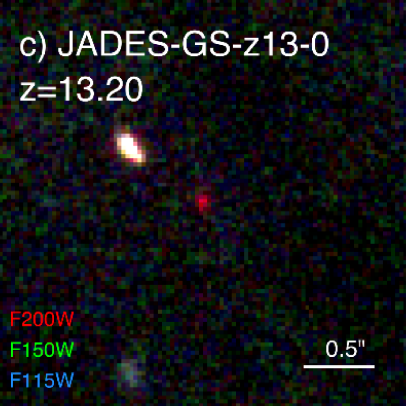|
HCM-6A
HCM-6A is an LAE galaxy that was found in 2002 by Esther Hu and Lennox Cowie from the University of Hawaii and Richard McMahon from the University of Cambridge, using the Keck II Telescope in Hawaii. HCM-6A is located behind the Abell 370 galactic cluster, near M77 in the constellation Cetus, which enabled the astronomers to use Abell 370 as a gravitational lens to get a clearer image of the object. National Astronomical Observatory of Japan, September 13, 2006 HCM-6A was the farthest object known at the time of its discovery. It exceeded SSA22−HCM1
SSA may refer to:
Geography
* Sub-Saharan Africa
Organizations
* Safe Schools Alliance, a British advocacy group ...
[...More Info...] [...Related Items...] OR: [Wikipedia] [Google] [Baidu] |
Abell 370
Abell 370 is a galaxy cluster located nearly 5 billion light-years away from the Earth (at redshift ''z'' = 0.375), in the constellation Cetus. Its core is made up of several hundred galaxies. It was catalogued by George Abell, and is the most distant of the clusters he catalogued. In the 1980s astronomers of Toulouse Observatory discovered a gravitational lens in space between Earth and Abell 370. A curious arc had been observed earlier near the cluster, but the astronomers were able to recognize it as this phenomenon. Gravitational lensing Abell 370 appears to include several arcs of light, including the largest ever discovered with 30" long. These arcs or deformations are mirages caused by gravitational lensing of massive and dark objects located between the observer and the distant galaxies. This cluster shows an apparent magnitude of +22. In 2002, astronomers used this lensing effect to discover a galaxy, HCM-6A, 12.8 billion light years away from Earth. At the time it w ... [...More Info...] [...Related Items...] OR: [Wikipedia] [Google] [Baidu] |
List Of Galaxies
The following is a list of notable galaxies. There are about 51 galaxies in the Local Group (see list of nearest galaxies for a complete list), on the order of 100,000 in the Local Supercluster, and an estimated 100 billion in all of the observable universe. The discovery of the nature of galaxies as distinct from other nebulae (interstellar clouds) was made in the 1920s. The first attempts at systematic catalogues of galaxies were made in the 1960s, with the Catalogue of Galaxies and Clusters of Galaxies listing 29,418 galaxies and galaxy clusters, and with the Morphological Catalogue of Galaxies, a putatively complete list of galaxies with photographic magnitude above 15, listing 30,642. In the 1980s, the Lyons Groups of Galaxies listed 485 galaxy groups with 3,933 member galaxies. Galaxy Zoo is a project aiming at a more comprehensive list: launched in July 2007, it has classified over one million galaxy images from The Sloan Digital Sky Survey, The Hubble Space Teles ... [...More Info...] [...Related Items...] OR: [Wikipedia] [Google] [Baidu] |
List Of The Most Distant Astronomical Objects
This article documents the most distant astronomical objects discovered and verified so far, and the time periods in which they were so classified. For comparisons with the light travel distance of the astronomical objects listed below, the age of the universe since the Big Bang is currently estimated as 13.787±0.020 Gyr. Distances to remote objects, other than those in nearby galaxies, are nearly always inferred by measuring the cosmological redshift of their light. By their nature, very distant objects tend to be very faint, and these distance determinations are difficult and subject to errors. An important distinction is whether the distance is determined via spectroscopy or using a photometric redshift technique. The former is generally both more precise and also more reliable, in the sense that photometric redshifts are more prone to being wrong due to confusion with lower redshift sources that may have unusual spectra. For that reason, a spectroscopic redshift is conventio ... [...More Info...] [...Related Items...] OR: [Wikipedia] [Google] [Baidu] |
Messier 77
Messier 77 or M77, also known as NGC 1068 and the Squid Galaxy, is a barred spiral galaxy about 47 million light-years away in the constellation Cetus. Messier 77 was discovered by Pierre Méchain in 1780, who originally described it as a nebula. Méchain then communicated his discovery to Charles Messier, who subsequently listed the object in his catalog. Both Messier and William Herschel described this galaxy as a star cluster. Today, however, the object is known to be a galaxy. The morphological classification of NGC 1068 in the De Vaucouleurs system is (R)SA(rs)b, where the '(R)' indicates an outer ring-like structure, 'SA' denotes a non-barred spiral, '(rs)' means a transitional inner ring/spiral structure, and 'b' says the spiral arms are moderately wound. Ann et al. (2015) gave it a class of SAa, suggesting tightly wound arms. However, infrared images of the inner part of the galaxy reveal a prominent bar not seen in visual light, and for this reason it is now consi ... [...More Info...] [...Related Items...] OR: [Wikipedia] [Google] [Baidu] |

